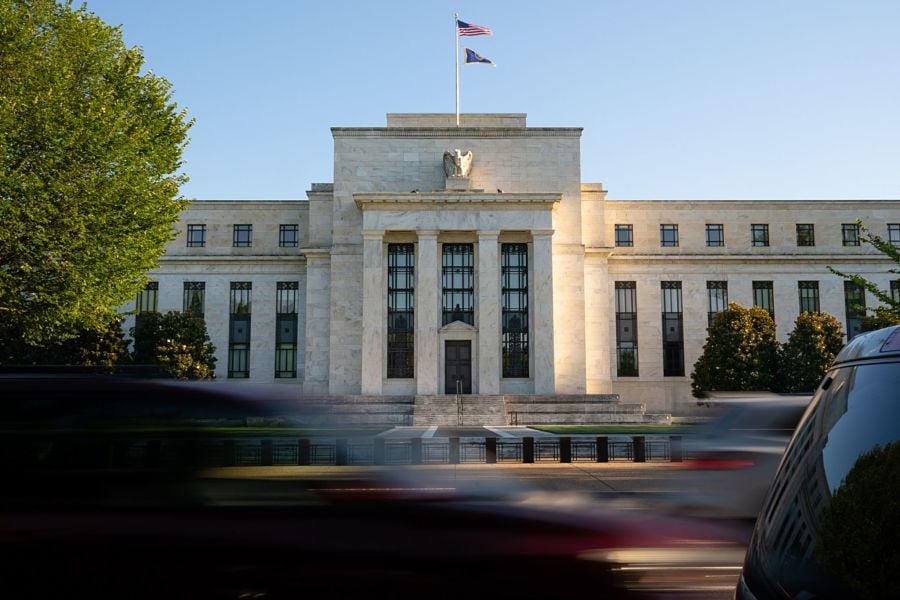

Federal Reserve officials maintained their outlook for three quarter-point rate cuts this year but forecast fewer cuts than before in 2025 following a recent uptick in inflation.
Officials decided unanimously to leave the benchmark federal funds rate in a range of 5.25% to 5.5%, the highest since 2001, for a fifth straight meeting. Policymakers signaled they remain on track to cut rates this year for the first time since March 2020, but they now see just three reductions in 2025, down from four forecast in December, based on the median projection.
“The committee judges that the risks to achieving its employment and inflation goals are moving into better balance,” the central bank’s policy-making Federal Open Market Committee said Wednesday.
The S&P 500 index of US stocks rose, while Treasury yields and the Bloomberg Dollar index fell. Traders boosted the probability that the Fed would begin its rate cuts in June.
The Fed’s post-meeting statement was nearly identical to January’s, maintaining the guidance that rate cuts won’t be appropriate until officials have more confidence that inflation is moving sustainably toward their 2% target.
The central bank also reiterated its intention to continue reducing its balance sheet by as much as $95 billion per month. Policymakers were scheduled to hold a discussion of balance sheet issues, and some, including Dallas Fed President Lorie Logan, have called for an eventual slowing of the pace at which the Fed is shrinking its portfolio of assets.
After raising the benchmark federal funds rate more than five percentage points starting in March 2022, Fed officials have emphasized that they’re in no rush to lower borrowing costs until they are certain inflation is contained.
Ahead of Wednesday’s decision and press conference, traders saw a slightly better than 50-50 chance of the first cut coming in June, and expected a total of roughly three cuts this year.
While policymakers see the federal funds rate reaching 4.6% by the end of 2024, according to their median rate projection, individuals’ expectations were split. The Fed’s “dot plot” showed 10 officials saw three or more quarter-point cuts this year, while nine anticipated two or fewer.
Fed officials have emphasized the projections are not a predetermined plan, and that the individual forecasts are subject to change based on incoming data for inflation and the labor market. A key measure of consumer prices has risen more than economists expected the past two months, while the US unemployment rate has edged up to a two-year high that officials still regard as low.
Policymakers also lifted slightly their forecasts for where they see rates settling over the long term, boosting their median estimate to 2.6% from 2.5%, following speculation from economists that higher rates may persist in the post-pandemic environment. The change implies rates will need to stay higher for longer in the future.
Policymakers updated their projections for inflation and economic growth for 2024, raising their forecast for underlying inflation to 2.6% from 2.4%, and boosting the growth forecast to 2.1% from 1.4%. They also lowered their unemployment rate projection slightly, to 4% from 4.1%, for 2024.
Following a series of lower-than-expected inflation readings in the second half of 2023, Fed officials had pivoted to discussing the timing and pace of interest-rate reductions. But a pickup in key price gauges at the start of the year has muddled the picture.
Powell told lawmakers this month the central bank is getting close to the confidence it needs to start lowering interest rates, saying they were “not far” from the level of confidence needed on inflation.
At the same time, he and other Fed officials have said there is no rush to make cuts with the economy on sound footing. Governor Christopher Waller, in a February speech, said it was “appropriate to be patient, careful, methodical, deliberative” with the economy solid and inflation above the central bank’s target.
In addition to its economic impact, the Fed’s rate path has been closely watched for its potential political impact during a presidential election year. Powell and other Fed officials have stressed the Fed is nonpartisan and makes its calls independent of politics, though rate cuts that boost the US economy could be seen to being helpful to President Joe Biden’s electoral chances.

Relationships are key to our business but advisors are often slow to engage in specific activities designed to foster them.

Whichever path you go down, act now while you're still in control.

Pro-bitcoin professionals, however, say the cryptocurrency has ushered in change.

“LPL has evolved significantly over the last decade and still wants to scale up,” says one industry executive.

Survey findings from the Nationwide Retirement Institute offers pearls of planning wisdom from 60- to 65-year-olds, as well as insights into concerns.
Streamline your outreach with Aidentified's AI-driven solutions
This season’s market volatility: Positioning for rate relief, income growth and the AI rebound
